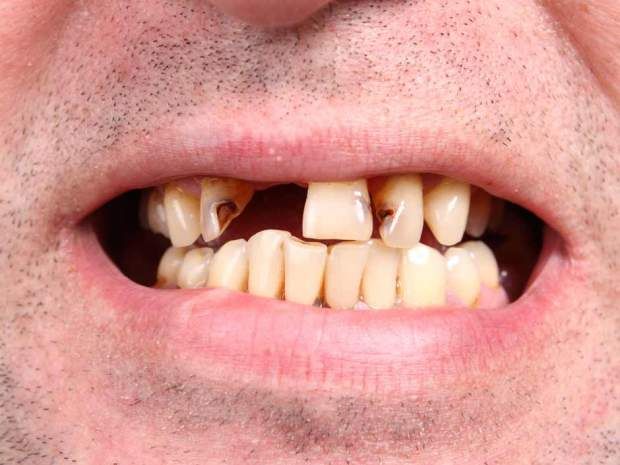A new study by the British Medical Journal (BMJ) has found that Brits have healthier teeth than Americans.
This makes the pro-fluoride argument less convincing as Britain has less in their drinking water.
With a fluoridation rate of of 74%, Americans find it hard to escape the dangers of fluoride. Britain’s water supply, on the other hand, only has 10% of its supply fluoridated.
Naturalblaze.com reports:
“Contrary to popular belief, our study showed that the oral health of U.S. citizens is not better than the English, with Americans having significantly more missing teeth,” said the study’s lead author, Dr. Richard Watt, Professor in Dental Public Health, Dept. of Epidemiology and Public Health, at UCL.
There is a longstanding belief in the United States that the British have terrible teeth, much worse than U.S. citizens. This view dates back at least 100 years, with toothpaste adverts extolling the virtues of American smiles.
Contemporary examples of this belief in popular U.S. culture range from The Simpsons to the popular Hollywood character Austin Powers and his repugnant smile.
Researchers looked to data on thousands of people in the U.S. National Health and Nutrition Examination Survey and the English Adult Dental Health Survey and found the “mean number of missing teeth was significantly higher in the U.S.,” at 7.31 versus 6.97 in England. The numbers are striking for juveniles, as 12-year-old Britons with missing or filled teeth averaged 0.7, while U.S. 12-year-olds averaged 1.3. With fluoridated water being touted as the reason for outstanding dental health in the U.S., the results of this study certainly call such boastful claims to task.
In fact, the Centers for Disease Control and Prevention found rates of dental fluorosis — “caused by long-term ingestion of fluoride during the time teeth are forming” and characterized by white spots in its mildest forms, to “staining andpitting in the more severe forms” — increased from 1999-2004 (the year of its study data) over previous numbers in the period from 1986-1987. This happened despite the original goal of fluoridation in the 1930s of decreasing the dental fluorosis rate.According to the CDC’s web page on Community Fluoridation:
Water and processed beverages (e.g. soft drinks and fruit juices [note: food processed using fluoridated water is listed elsewhere]) can provide approximately 75% of a person’s fluoride intake […]You should know the fluoride concentration in your primary source of drinking water, especially if you have young children.
With all this fluoride consumed in the U.S., one would expect the Harvard/UCL study to have dramatically different findings — if fluoridated water were actually doing what the government purports. Though the study did not factor in rates of fluoridation — and indeed was “not able to explore in depth potential explanations for [its] findings” — the comparison is certainly worth consideration.
“Water fluoridation was implemented before statistics had been compiled on its safety or effectiveness,” Stephen Peckham, Director and Professor of Health Policy at Kent University’s Centre for Health Service Studies, told theGuardian. “You can’t really confidently say that water fluoridation is either safe or effective. There is a problem where the evidence is seen as either totally in favor or totally negative, and it’s more murky than that.”
Doubts, as the Guardian pointed out, certainly abound, as experts and researchers have cited studies finding correlations to fluoridated water supplies and bladder cancer, bone cancer in boys, hyperthyroidism, hip fractures, and lower IQ in children.
“It’s been going on since 1950, and we are still having the same arguments over the same research,” Peckham continued. “We don’t have the information to address this. I think they should have a moratorium [on water fluoridation].”

